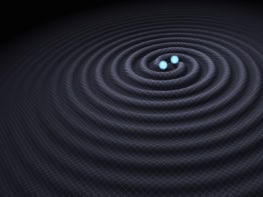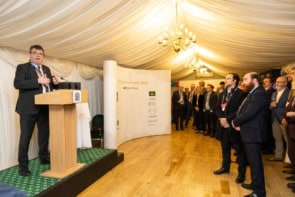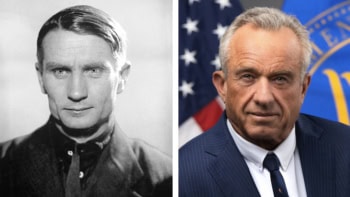Construction of a major new €1.7bn nuclear research centre is due to get under way in Germany this year. Edwin Cartlidge discusses the project with incoming scientific director Paolo Giubellino

What is the Facility for Antiproton and Ion Research (FAIR)?
FAIR is a complex of accelerators being built by a collaboration of eight European Union countries [Finland, France, Germany, Poland, Romania, Slovenia, Sweden and the UK] plus Russia and India, as an extension to the GSI Helmholtz Centre for Heavy Ion Research (GSI) outside the German city of Darmstadt. It will feature a synchrotron housed in an 1100 m-circumference tunnel, which will supply very intense and high-energy ion and antiproton beams to a variety of experiments. Some 3000 scientists from around the world will use the facility to carry out a broad scientific programme, covering nuclear structure and matter, astro-physics, materials science, plasma physics and biophysics.
What specific topics will it address?
FAIR will allow us to study matter under extreme conditions of temperature, density and pressure, such as occurred in the early universe or takes place at the centre of stars. For example, it will allow scientists to study how quarks, which in the very early universe were thought to roam free within what is known as the quark–gluon plasma, became bound up inside protons and neutrons. This is essential to our under-standing of the way nuclei acquire mass, because the Higgs-mediated quark mass accounts for only about 1% of a proton’s or neutron’s mass. FAIR will also be used to explore the nuclear physics processes involved in the production of the heavy chemical elements that we see around us in the world today.
What experience will you bring?
I am an experimental physicist and have been building instrumentation for large experiments all of my life. I also have plenty of management experience, having been spokesperson of the ALICE experiment at the CERN laboratory in Geneva for the previous six years. Being in charge of this 1600-strong international collaboration taught me how to manage issues and crises, as well as see a project through to successful operation and get good physics out. Also, the Physics World January 2017 fact that I am not originally from the GSI is useful because it means I will bring a fresh perspective.
What is the current status of FAIR?
It is a very nice moment for the project. Construction was given final approval by member states in a council meeting in June 2016 and by the German research ministry in September. The first call for tenders for civil construction was then issued. According to a schedule approved by the council last month, civil engineering will get under way this summer and should be largely complete by the end of 2022.
When should experiments begin?
The main programme should start in 2025, by which point the accelerators should be fully operating. But there should already be new experiments by the middle of 2018, which will exploit the fact that GSI accelerators are currently being upgraded to serve as injectors for FAIR.
In 2009 FAIR was due to cost €1.35bn and be ready in 2016. What caused the price rise and delay?
FAIR is an innovative and highly complex facility. As the planning process got more detailed, it was realized that extra funds would be needed to cover the costs of radiation protection and fire protection. Construction was put on hold until member countries could agree the extra funding, which they did in last June’s council meeting.
Might the delay make the facility less competitive?
This question was addressed by an international expert commit-tee chaired by former CERN head Rolf-Dieter Heuer, after the funding gap came to light in 2014. The expert committee reassessed FAIR’s four scientific “pillars” in relation to the physics programmes available at other existing and future facilities, concluding that two of the pillars would remain unique with a large discovery potential, while the other two would provide valuable data not available elsewhere. It is not unusual that very large projects get delayed; the important thing is that along the way people look at the physics case and readjust their focus as needed.
So is FAIR now fully funded?
That is what the council had to agree upon in its meeting last June. All of the representatives of the national funding agencies had to raise their hands and say the funds could be guaranteed. They did that, and that was the turning point in the meeting. You could not get the signatures for construction unless you had a guarantee that the funding was secured.
Is it true that Russia and India have yet to sign on the dotted line?
They have agreed that they will pursue their shares of the missing funding, which are, respectively, about 18% and 3.5% of the total. They have stated that they are reasonably confident that the funding will be released. This is a long process. In India, approval has to go through parliament. And with Russia, negotiations are ongoing and promising. I think things looks quite positive as of today; in fact the German government has seen the commitment as sufficient evidence to go ahead with construction.
What happens if negotiations stall?
This is a difficult question. I think it very likely that the funding will be found. There are definitely strategies of how to cover for this. I am not involved enough in discussions with the German government to know the details, but I do know there is a plan B.



